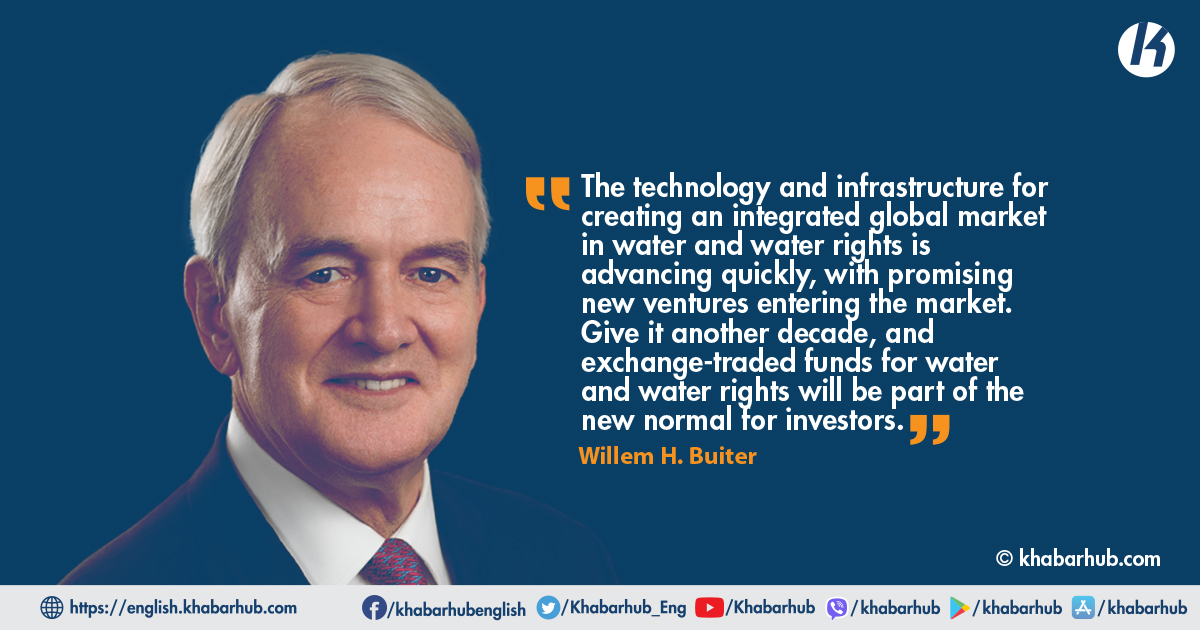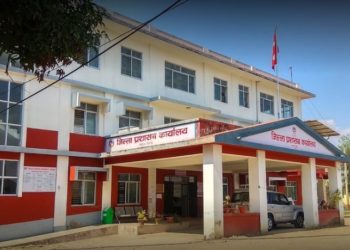Just over a decade ago, I predicted the arrival of water as an asset class. I foresaw “a massive expansion of investment in the water sector, including the production of fresh, clean water from other sources (desalination, purification), storage, shipping, and transportation of water.”
This would result in “a globally integrated market for fresh water within 25 to 30 years. Once the spot markets for water are integrated, futures markets and other derivative water-based financial instruments – puts, calls, swaps – both exchange-traded and OTC [over-the-counter] will follow.
There will be different grades and types of fresh water, just the way we have light sweet and heavy sour crude oil today.”
In fact, I believed that water would eventually be “the single most important physical-commodity-based asset class, dwarfing oil, copper, agricultural commodities, and precious metals.”
Ten years later, the future is now – though not quite what I expected.
In December 2020, the Chicago Mercantile Exchange Group created the first futures market in water. Cash-settled water futures with a maximum contract period of two years are now traded on the CME Globex electronic trading system.
I view this development as somewhat premature. For futures markets (and markets for other derivatives like put and call options) to function properly, the underlying spot market – in this case the spot market for physical water or water rights – should be liquid and transparent.
To recognize water as a scarce renewable resource, a tradable commodity, and a marketable asset is not to diminish its unique significance as a good that is essential to life and viewed by many as a gift from God.
CME Group’s futures market is based on the Nasdaq Veles California Water Index, which tracks the cash price of physical water rights in California, based on transactions in surface water and in four groundwater markets.
Because the local and regional water supplies often are not connected, let alone fully integrated, the spot market underlying the futures market is too segmented; it does not represent a single, homogeneous commodity or asset.
Today’s spot markets for water and water rights thus are too illiquid and non-transparent to support an economically and socially useful futures market.
But there is hope. The regional and global integration of physical water supplies – and the associated spot markets for water and water rights – is making spectacular progress. Two ongoing developments stand out.
One is Project Greenland, created and sponsored by Thomas Schumann Capital, in partnership with North Atlantic Research and Survey Ltd.
Under its Iceberg Management and Water Extraction Program, suitable free-floating North Atlantic icebergs weighing 1.2-1.4 million tons are towed to an operational location in Scotland, where the ice and water are prepared for international transportation.
The target markets are in the water-deprived Middle East and North Africa. The project is scalable and relies on established technologies and infrastructures being deployed in an innovative and disruptive manner.
Given time, additional technological advances, and proper spot-water pricing, icebergs from Antarctica also could become viable sources of fresh water.
A second fascinating entrant to the global water markets is SkyH2O’s Atmospheric Water Generation (AWG) system, a proprietary technology that extracts clean fresh water from the atmosphere.
The business model here is flexible and scalable, because AWG capacity can be deployed in a distributed manner to reach the ultimate customers, be they governments, households, or industrial, commercial, and agricultural users.
Its cost effectiveness, relative to alternatives like desalination and distillation, depends on atmospheric humidity and the price of energy in the proximity of the customers.
Water is indeed becoming an asset class. Give it another decade, and exchange-traded funds for water and water rights will be part of the new normal for investors.
The future of water as a significant asset class depends on the willingness of governments – and ultimately of society at large – to price water at its long-run social marginal cost as a scarce renewable resource (including the cost of addressing the negative environmental externalities associated with its production and distribution).
Globally, over 70% of fresh water is used in agriculture, and most of this usage is either free or heavily subsidized. Households in many countries also pay but a small fraction of the long-run social marginal cost of the water they use.
I hope and expect that both these anomalies will soon end. There is growing recognition of deepening freshwater-scarcity crises around the world, as well as a greater willingness on the part of policymakers to price negative environmental externalities appropriately.
To recognize water as a scarce renewable resource, a tradable commodity, and a marketable asset is not to diminish its unique significance as a good that is essential to life and viewed by many as a gift from God.
When socially efficient water pricing creates economic hardship, an appropriate fiscal response through targeted income support is required.
If this fails – perhaps because the state cannot identify who is adversely affected by proper water pricing – a two-tier tariff may be required.
While a social subsistence level of water should be provided for free or at a heavily subsidized price, all additional water usage could be priced at its full long-run social marginal cost to preserve the right incentives.
Water is indeed becoming an asset class. Give it another decade, and exchange-traded funds for water and water rights will be part of the new normal for investors.
(Willem H. Buiter is a visiting professor of international and public affairs at Columbia University)
Copyright: Project Syndicate









Comment